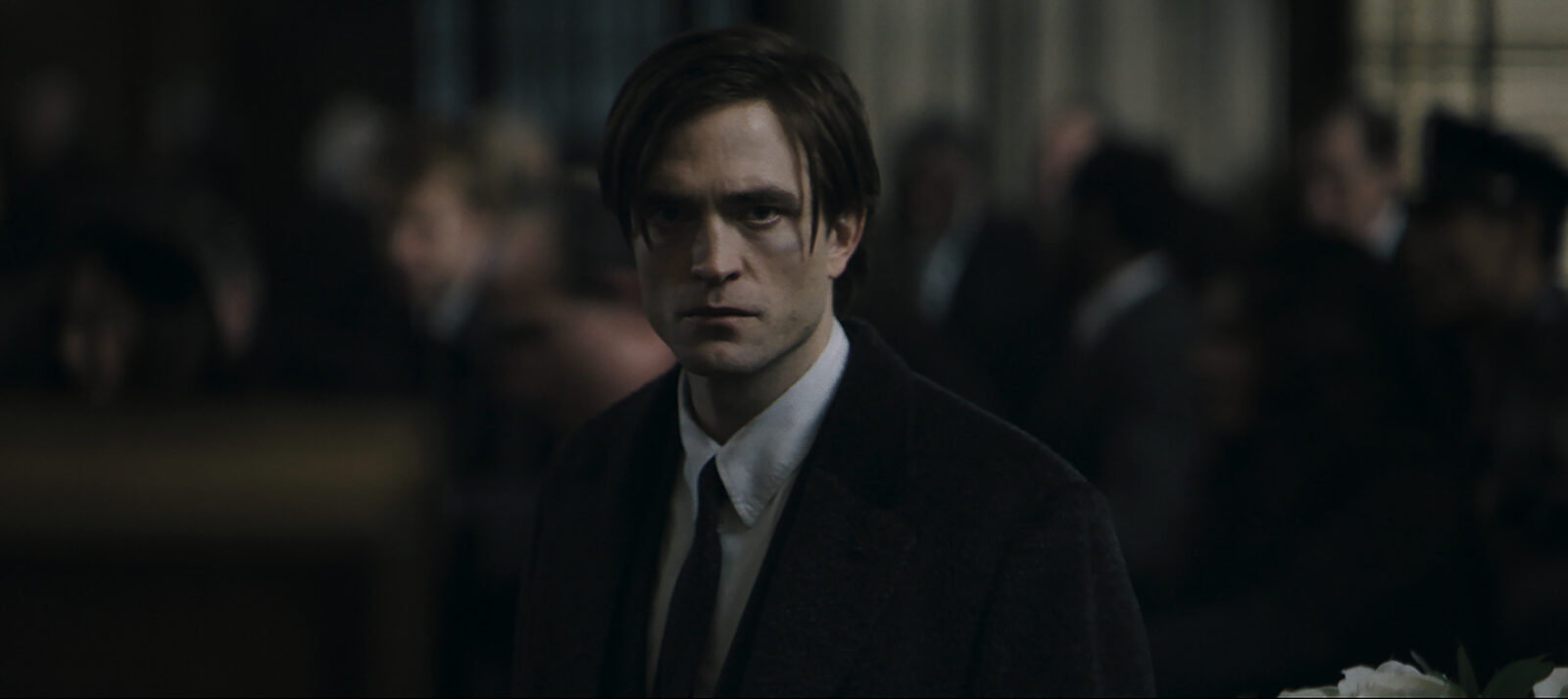Matt Reeves’ The Batman will likely go down as a mold-breaking movie when it comes to the current state of superhero fatigue, where at this point, most comic-book film franchises have started to blur together, not really going for a definitive style. Well, The Batman certainly does, by taking its familiar characters and settings plucked out of the page and infusing them with the dark, cynical, and heavily dramatized hallmarks of film noir detective movies, while empowering said characters to find a way out of that very darkness. It’s not the first superhero movie to try this, but it’s one of the first to do it this well.
Unlike other re-imaginations of the “world’s greatest detective,” The Batman is a story that doesn’t focus much on the origins of how Bruce Wayne became Batman. It takes place just two years after Wayne took on the mantle, just now facing a new threat from rogues gallery mainstay “The Riddler,” played by Paul Dano. In The Batman, this Riddler is a mysterious serial killer meticulously taking down Gotham’s corrupt political elite in the days before the city’s mayoral election, justifying his murders in the name of seeking transparency and justice by any means necessary. As Batman deciphers the Riddler’s cryptic correspondence with the help of clear-eyed police lieutenant Gordon (Jeffrey Wright), the film uncovers an even more pressing mystery. Is Batman, in all his pursuit of vengeance against a broken system, just as culpable of Gotham’s cycle of violence as the thugs he beats down on a nightly basis?
Taking another hallmark of film noir, this version of Batman doesn’t see Bruce Wayne as the suave playboy, but rather a young man in constant turmoil, still processing the death of his parents and using the caped crusader as a reckless outlet for his trauma. This brooding and melancholic protagonist is excellently depicted by Robert Pattinson, who further aligns with classic noir through angsty voice narration and an increased spotlight on his detective abilities. In terms of live-action Batman stories, this narrative choice is certainly a refreshing one.

“Battinson’s” performance isn’t the only highlight. Zoë Kravitz is stellar as Selina Kyle, a.k.a. Catwoman, balancing mystery and charm to complement the empathetic side of not just Batman, but also Gotham itself. Dano’s Riddler, even while having his face covered in tape throughout most of the runtime, brings a memorable intensity to the character, to the point where his presence is felt even during long stretches when off-screen. His brutal actions are scary, to be sure, but what’s perhaps scarier is how he’s able to garner a following by inspiring other criminals, somewhat similar to the political underpinnings of Joker, but with more uncomfortable, menacing realism.
The Batman is also a superb display of practical effects, including an exceptional how-did-they-do-this? car chase scene that puts all other Batmobile sequences to shame, with Colin Farrell delivering his own showcase as an unrecognizable Penguin. Additionally, the sound design and photography of this film’s Gotham makes the city feel both alive and deeply rotted by its crime and cynicism. Screenshots of the cityscape itself deserve to be printed. The city’s neon lights, soaked dark interiors, and rare inclusion of any daylight further establish this noir atmosphere on a thematic level, elevated even further by Michael Giacchino’s operatic score.
With a more concise runtime, The Batman could almost be considered flawless in execution. Sadly, the third act extends a bit too much, with an overlong set piece that seems out of place with the movie’s more investigative mode. The final escalation is also a bit odd in its conception and abruptly transforms a nicely grounded character into an absurdist one. The basic conceit has potential, showing how one vision of justice or vengeance can spring from a deranged, counterproductive attitude. But as it plays out, the film practically stitches different acts from different movies together into one strange piece.
If The Batman was only an homage to film noir that only happens to feature one of the most popular comic book characters of all time, that would be enough to dub it interesting, at least on an aesthetic level. But it pushes its own boundaries, clinically approaching the root ideas of crime and violence, not just as short-term problems to solve but systemic issues that a man in a mask can’t really fix, hero or villain. In this case, the hero actually has a chance to wonder if things don’t have to be this way, which is where The Batman goes from traditional noir into something more modern and hopeful. Where deeply troubled characters, including Bruce Wayne himself, doesn’t have to always embrace the darkness of night when helping the city find its sunrise.
The Batman is now playing in theaters everywhere. Watch the trailer here.
Advertisement
Advertisement







